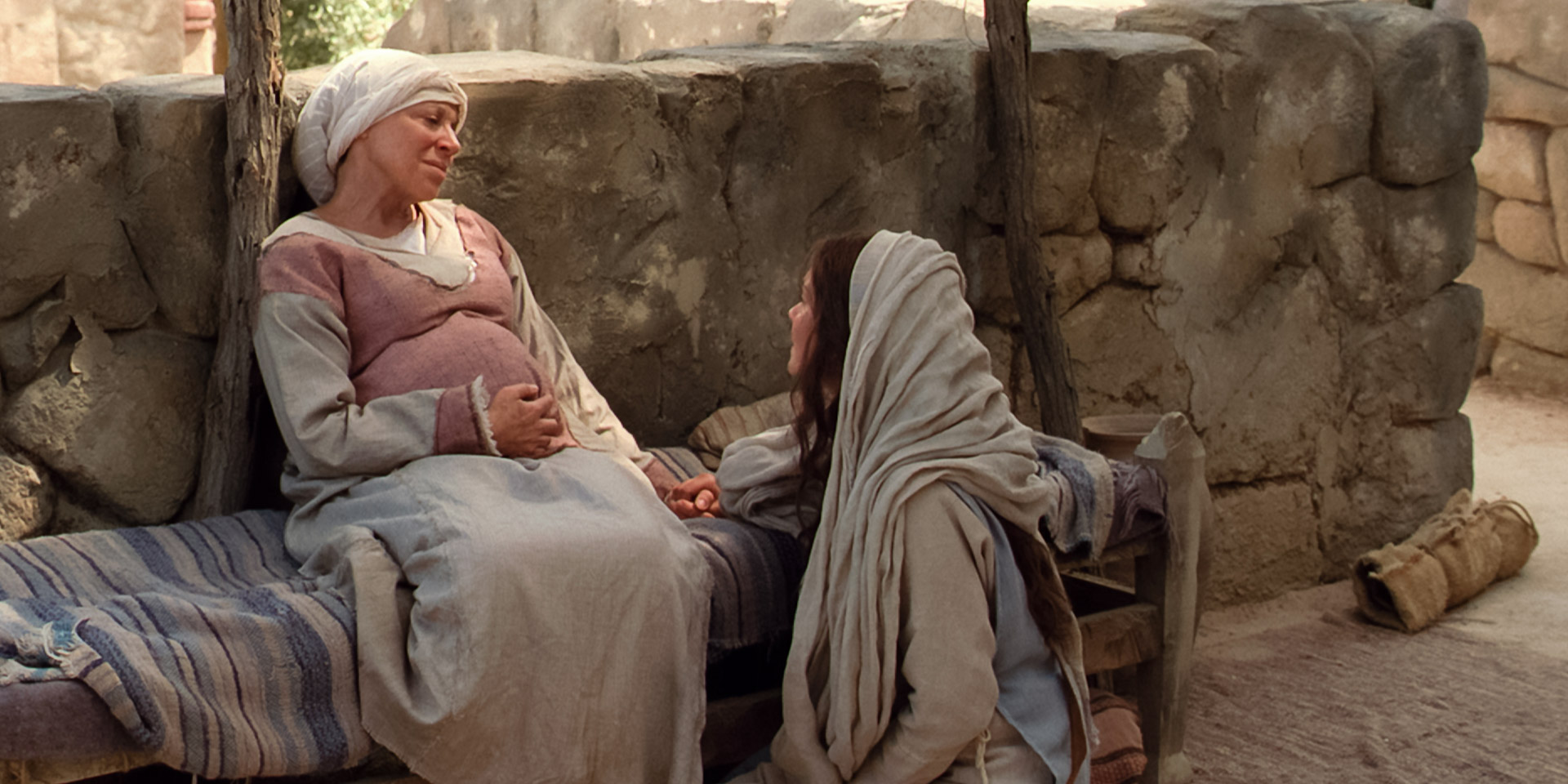
Years ago, when asked to speak at a Visiting Teaching conference, I used Mary and Elizabeth as visiting teaching examples. We can apply the same to our ministering. Their story is found in Luke, chapter 1.
Verse 36
Elizabeth, Mary’s older cousin, is old and six months pregnant. We don’t know how old she is, but we can only imagine how her body must be feeling. She needs some serious comfort at this time.
Verse 39
Mary goes out to the country to visit Elizabeth. They both have something to talk about, don’t they? Mary can give comfort to Elizabeth, and Elizabeth can give comfort to Mary. Regardless of their age difference, they can relate to one another and comfort one another as no one else can.
Verse 41
Mary salutes Elizabeth warmly, perhaps with a kiss, hug, and expression of love. The Holy Ghost is there with the women. And the two babies rejoice as well.
Verse 42
They share their blessings with one another. And perhaps more importantly, they share their innermost thoughts.
Verse 43
Elizabeth testifies to Mary that she knows who she is.
Verse 46-55
Mary testifies to Elizabeth.
Verse 56
Mary stays for 3 months, helping, comforting, and is likely there at the time of delivery to help.
Think of how we minister today. Do we find relatable things to share with one another? Do we act when the spirit tells us to? Do we bear testimony to one another? Do we serve to really serve? As sisters of the Relief Society, we are messengers of love, truth, spirit, and service.
Speaking of women, it may be of interest to you that there are four women mentioned in the genealogy of Joseph (Matthew 1), who was a cousin of Mary’s.
Rachab
Most scholars believe this is Rahab, the “harlot” who saved the spies of Israel in the city of Jericho (Joshua 2). We think of only one definition of the word harlot, but there is another. It also means a nation, pledged to serve Jehovah, that turns away from him to worship other gods, as the city of Jericho did. It is also possible the word harlot is a mistranslation. The Hebrew word might have meant hostess or innkeeper. Because, as we recall in the story, she sheltered the spies sent by Joshua. And when she does this, she testifies, “I know that the Lord hath given you the land … for the Lord your God, he is God” (Joshua 2:9-12). Such a great story of faith and testimony. She was the mother of Boaz who married …
Ruth
Like Rahab, Ruth was a Gentile, a stranger to the House of Israel, yet was accepted in and is a direct ancestor of Jesus Christ. We all love Ruth for her humility and willingness to stay and serve. Her life is a testimony that all are accepted in Christ through their obedience and humility (Ruth).
Thamar, or Tamar
Her story is somewhat controversial, as she took it upon herself to “play the harlot,” with her father-in-law in order to become with child, continuing the posterity of Judah (Genesis 38). Her actions literally redeem Judah and all future Jews, single-handedly keeping alive the ancestral line all the way down to the birth of Jesus Christ. Sometimes, we stay clear of things we don’t understand in the scriptures but look what stories we miss when we do.
Bathsheba
Bathsheba is an interesting person. Did she do anything wrong when David saw her on the roof and wanted her to come to him? Some say she was a helpless victim, perhaps even raped. After all, who can refuse a king (2 Samuel 11)? However, can we see Esther, Ruth, or even Mary allowing David to have his way? What if Bathsheba had insisted that she was married, and was willing to die rather than commit this grievous sin? Could David’s soul have been saved by this single act of courage?
Can we see how important righteous women are to Jesus Christ? He needs us to stand with righteous courage at all times and in all places. He has inspired women to do incredible things that promote the building of the kingdom of God. He needs us today to continue in righteousness by acting, with courage, to the Holy Spirit’s promptings.
Some of these insights come from Lee Donaldson (CES) and my husband.